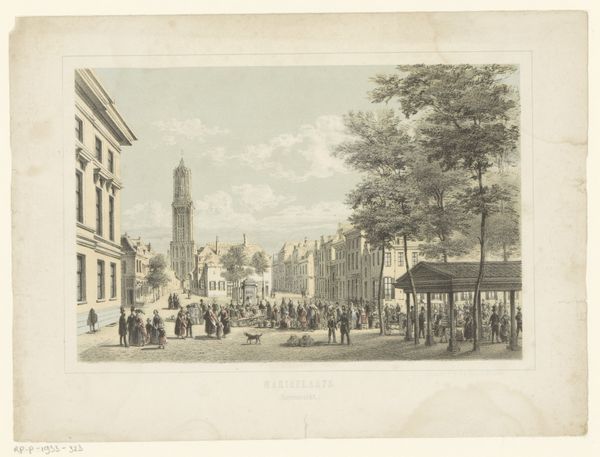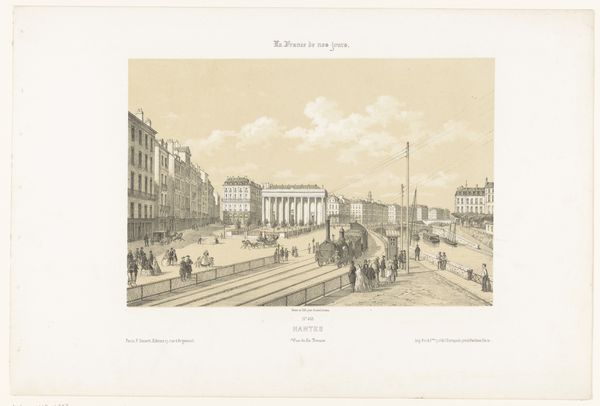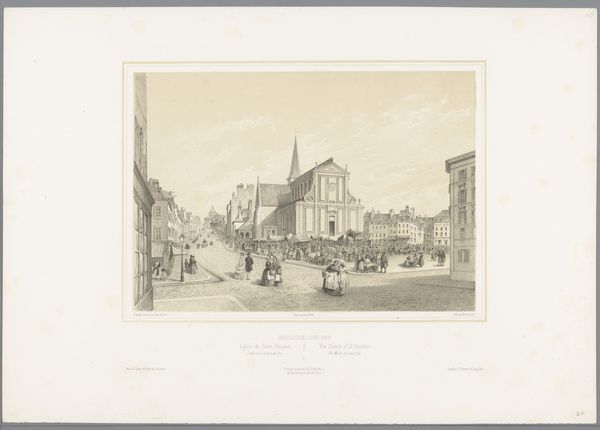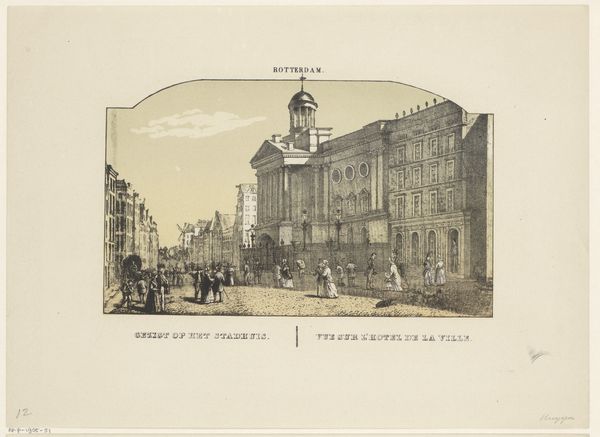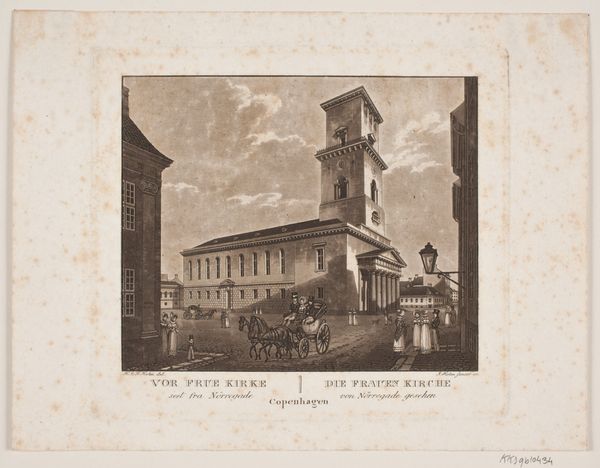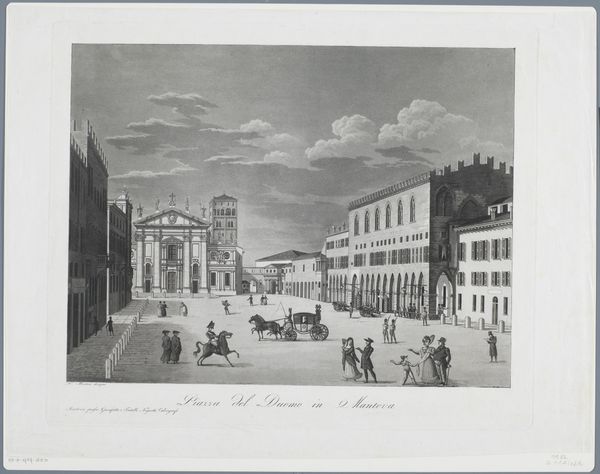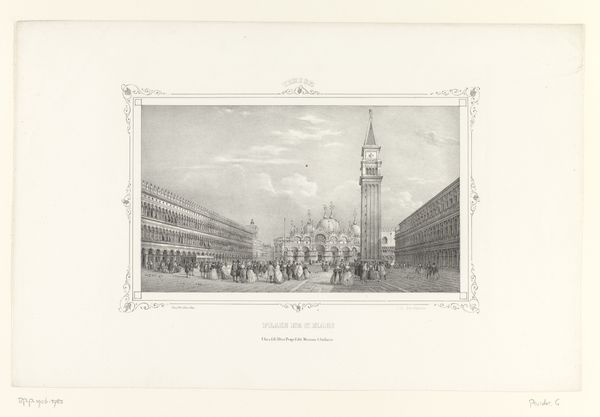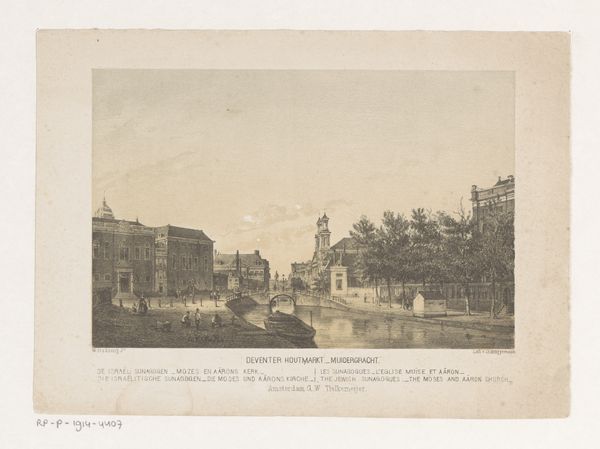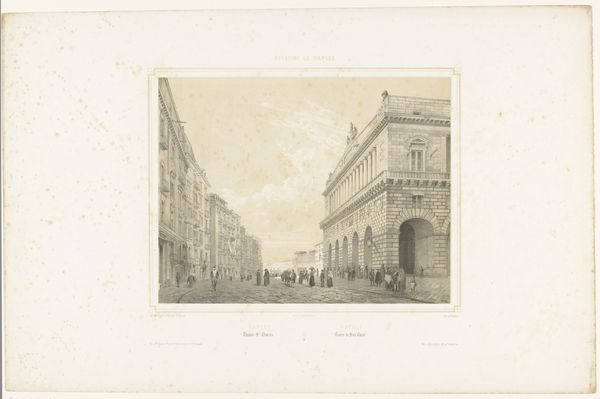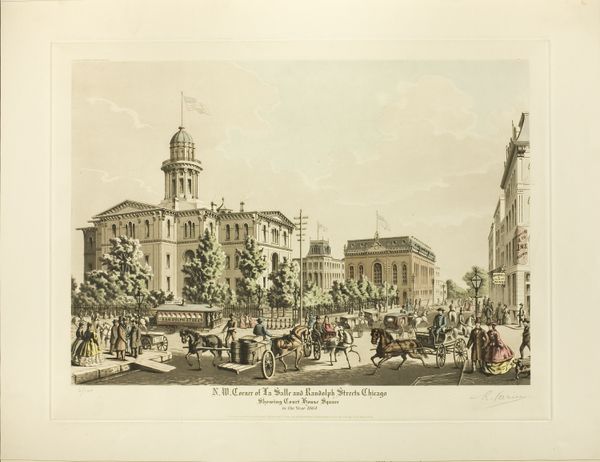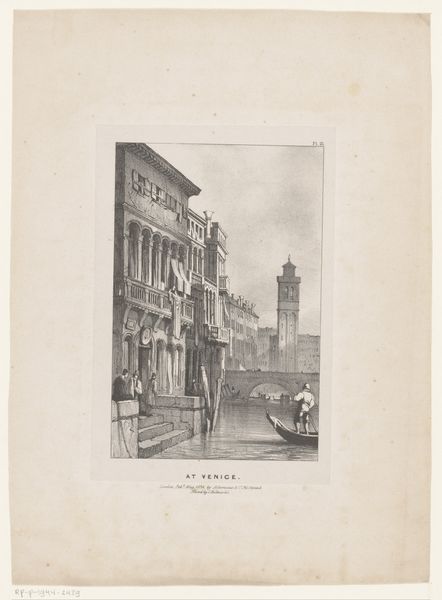
# print
#
cityscape
#
genre-painting
#
realism
Dimensions: height 291 mm, width 435 mm
Copyright: Rijks Museum: Open Domain
Curator: This print, “Zicht op de Place Bisson in Lorient”, by Léon Auguste Asselineau, made between 1863 and 1864, offers a captivating snapshot of daily life. Look at the intricate detail rendered through printmaking. The materiality itself speaks to mass production and dissemination of imagery during that period. Editor: The scene exudes a calm orderliness. The composition is anchored by that prominent church tower, a clear symbol of stability, watching over the figures engaged in everyday activities in the square. There's almost a photographic quality to it. Curator: Exactly! And note the subtle commentary on class and labor embedded in the image. While appearing documentary, consider the choices the artist makes about whom to depict. What is being said about the city Lorient through the working class figures included. The print is intended for wider audiences through which this everyday view becomes readily available. Editor: Absolutely, but the square itself also feels like a carefully designed stage. The central monument, although somewhat faded, evokes classical ideals with its statuary. I see it as representing civic virtue. Do you see how everyone is posed or positioned. Is this purely chance, or is Asselineau referencing earlier works by artists? Curator: You're pointing to the tension between reality and constructed reality within this seemingly simple cityscape. Consider, too, the resources needed to create and distribute this print. Who commissioned the image, and why? Consumption played a huge part of what this image represents. Editor: These urban scenes have multiple functions. I believe this particular image evokes idealized civic order but subtly implies how authority structures define those interactions through symbolism that a period eye would identify. I see the quiet order of French society at the time. Curator: And by emphasizing those visual details, it highlights the power and politics inherently contained within even the seemingly mundane. How are different meanings generated at different viewing eras as an indicator? The material reality serves as a touchstone of our interpretations today. Editor: It has been so revealing, viewing this bustling square through the contrasting lenses of symbols and making. Curator: By considering the print's tangible construction, alongside your perceptive insights into its deeper symbols, the history really does come alive.
Comments
No comments
Be the first to comment and join the conversation on the ultimate creative platform.
